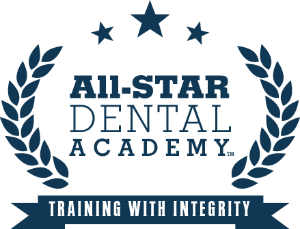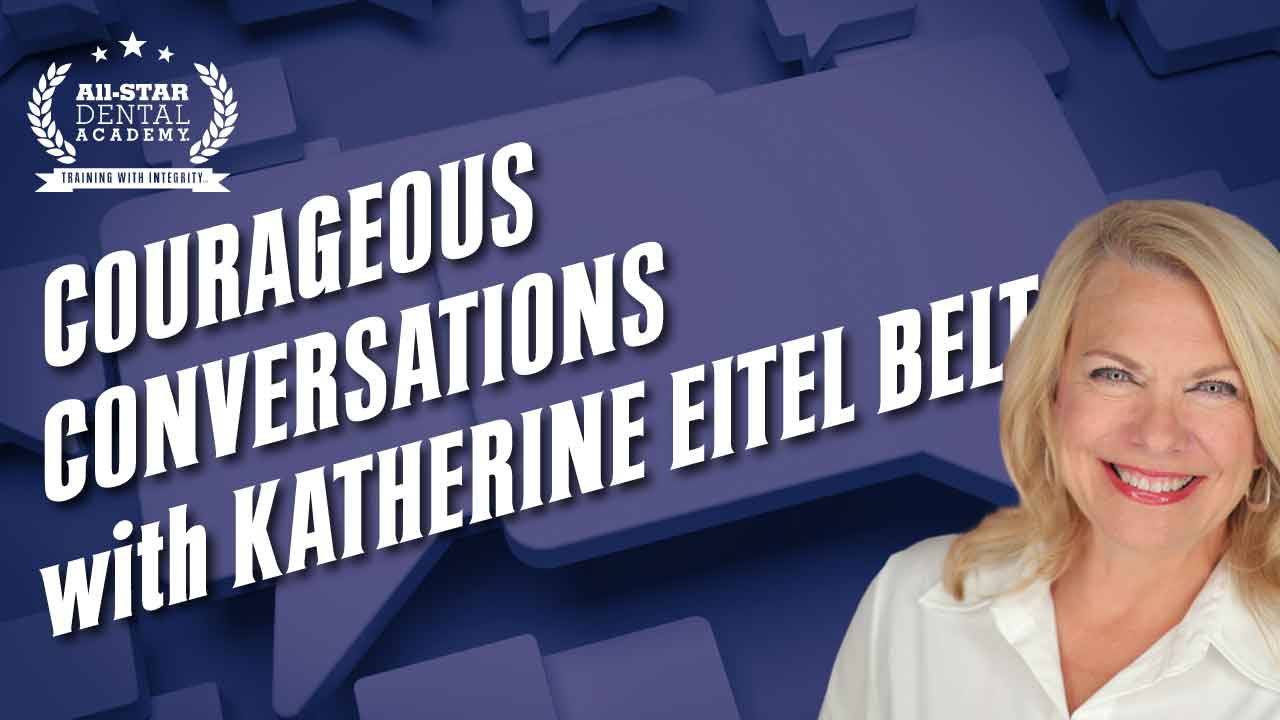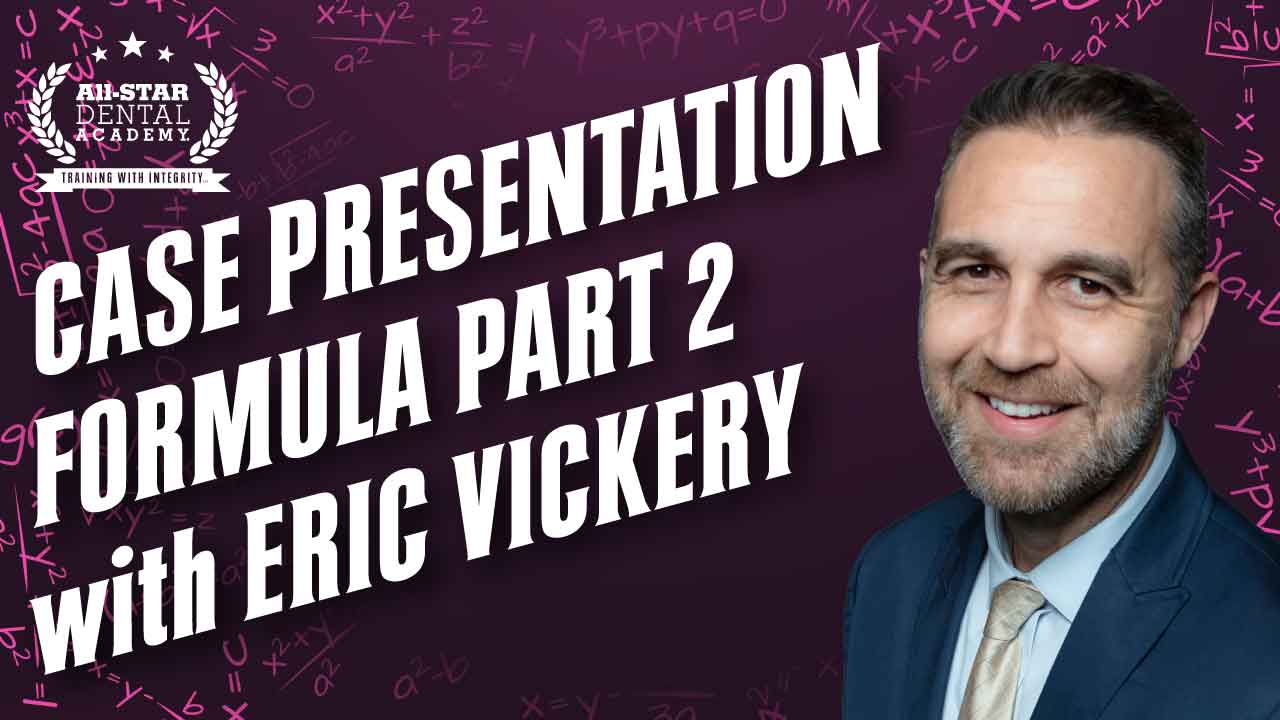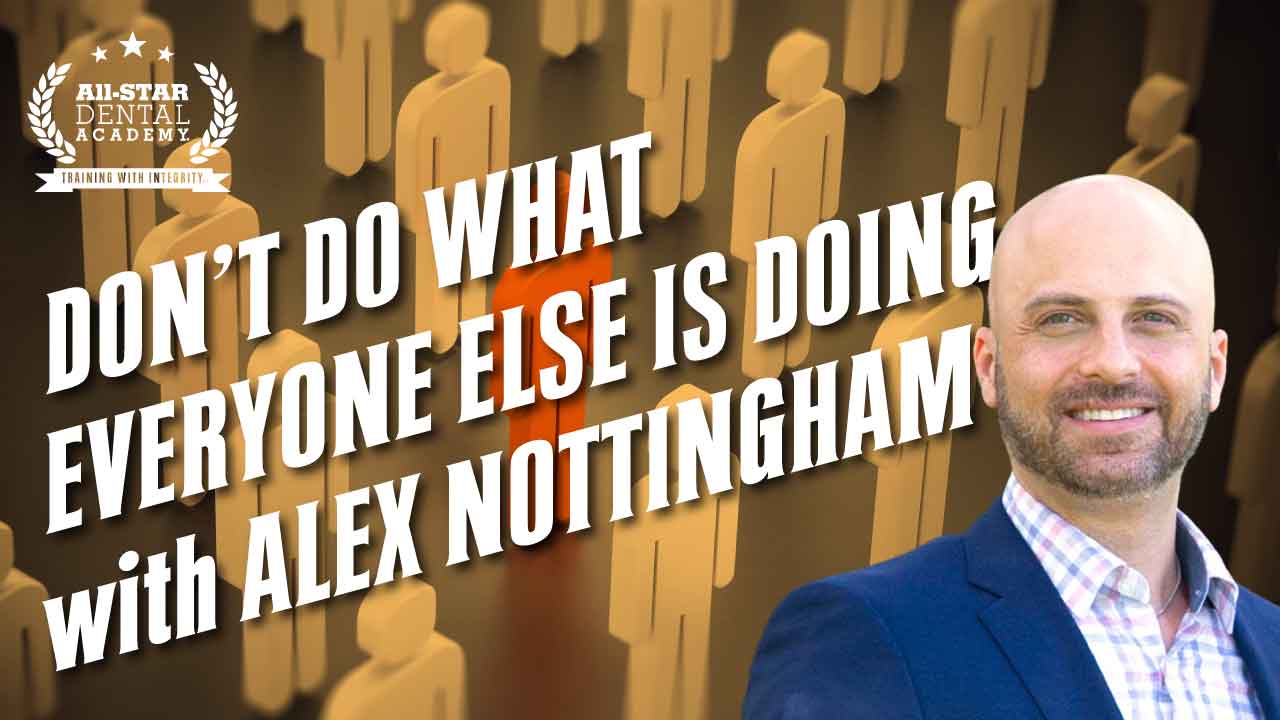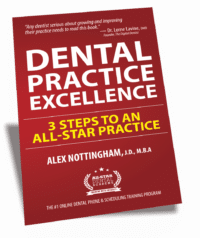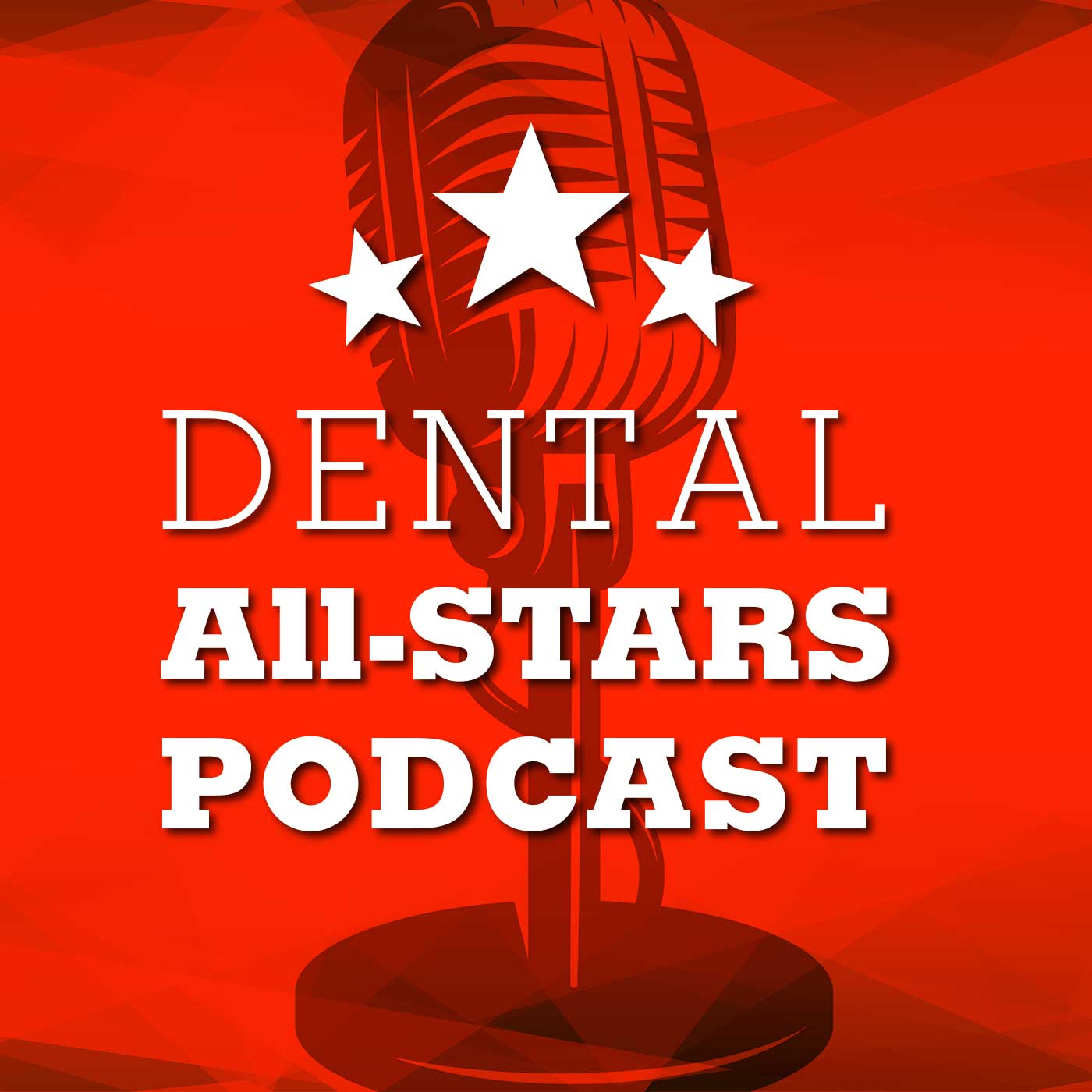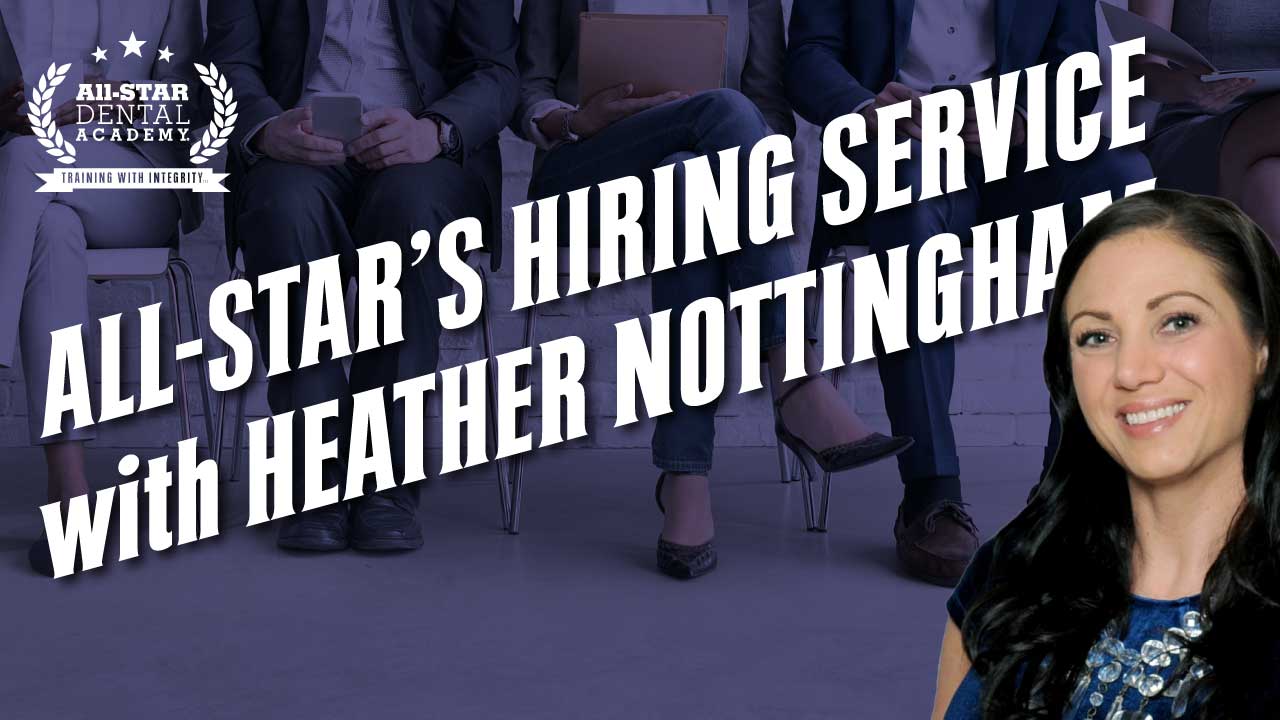Dental All-Stars podcast features hygiene Mastery Coach, Lyn Dalsfoist, discussing hygiene’s pivotal role, coaching tips to drive practice growth, and patient care strategies.
Resources:
About Lyn Dalsfoist, RDH, BS, MBA
Lyn has been a Dental Hygienist for four decades. She also holds an MBA in Health Services Administrations. Early in her career, she worked in public health. She was offered a Dental Hygiene/Dental Disease Prevention Coordinator position for the Indian Health Service Alaska Native Medical Center (ANMC) providing clinical hygiene, planned, implemented, and evaluated dental disease prevention and smokeless tobacco cessation programs. She received recognition for the success of these programs. At that same time, she also served as an adjunct clinical instructor at the University of Alaska Anchorage Dental Hygiene Program. After several years, she moved to private practice. For the past three decades, besides performing clinical procedures, she served as lead hygienist, managing dental hygiene departments, implementing periodontal disease management protocols, key performance indicators, case acceptance and recall systems. She has guided hygiene departments to expand successfully, helping practices to grow in quality of patient care and profitability.
About Eric Vickery
Eric holds a degree in business administration and brings a strong business and systems approach to his consulting. His initiation into the field of dentistry was in the area of office management. He managed dental practices for over ten years and has been consulting over 250 offices nationwide since 2001.
Episode Transcript
Transcript performed by A.I. Please excuse the typos.
00:02
This is Dental All-Stars, where we bring you the best in dentistry on marketing, management and training.
00:11
Welcome to Dental All-Stars. I’m Eric Vickery, President of Coaching at All-Star Dental Academy. And I’m very excited to interview our guest today, a long-time friend of mine. I’ve always known her as a hygienist and now as a hygiene coach. That is Lyn Dalsfoist. And I’m so excited to have you. We’ve been talking and planning and talking and planning for, it seems like a long time now. And I want you guys to know, we’re gonna talk to her about what it takes to create a successful hygiene department today.
00:40
She’s truly an amazing coach. I’ll give you some background on her. She’s obviously been a hygienist for a lot of years. 40 years you were a hygienist, exactly from, what do you say, 1982? 1982 to 2022. 1982 to 2022, up in Alaska, where I met her. And she’s retired to Las Vegas. Her and her husband reside there with her family. And I gobbled her up as a coach, and she does an amazing job with clients
01:10
really understand not only how to grow your hygiene department from a patient volume standpoint, but also from a healthy quality periodontal percentage standpoint. We’re gonna spend a lot of time talking about that, but she has her MBA in Health Service Administration. She knows her stuff. She’s written a hygiene manual. It is beautiful. I love it. It’s just everything I’m not. And so welcome, Lynn. Thank you for being here. Thank you very much for having me over, Eric.
01:40
Oh, absolutely. Absolutely. So let’s jump right in. Let’s get everybody going on hygiene. So you and I look at KPI numbers, we see numbers that’s going on with clients, you know what we’re looking for. What would you say prevents the hygiene department from truly thriving as a department? Well, it’s all about mindset. And I’ll say that, um, some dental practices and some doctors still think that
02:10
Hygiene is a loss of either. But I’m here to tell you from experience that if you give your hygienists the tools and the skills that they need, they will thrive. And your hygiene department can become a backbone to your practice because it is also a touch place with you and the patients. So you can give your patient proper care and they also become loyal.
02:38
if you make sure I understand you. So what you’re saying is, if you have a dentist that’s a perspective of, hey, I just get the patients in hygiene and do what we can with them, all of that, and it’s a loss leader, just to try to get them into dentistry. What you’re saying is, maybe you’re doing it wrong, and you have the different mindset on it to say, why not make it a profit center or a quality center? Is that right? Okay. Correct, correct. Because you know, when you do an exam, you focus more on restoration versus focusing on.
03:08
patients, stereo, right? So you do check all the grooves and margins and nooks and crannies around your teeth. But are we probing? Are we neglecting probe our patients and are we doing more bloody profi? Yeah. And is that what we, yeah. And that is that what we want to have our patients experience. So let’s talk about that. That the super profi, the bloody profi.
03:36
you know, it’s been a long time patient, whatever it is. What do you think the causes are when it comes to under diagnosing or the under treatment planning of periodontal disease in a hygiene department to begin with? Okay, but let me start with, everybody knows, I mean, I hope everybody knows that periodontal disease is associated with some of the systemic diseases. Yeah. For instance, right? Heart disease, stroke, diabetes, respiratory disease, it’s to name a few, okay?
04:05
So it is also important to look at that in the context of getting our patients healthy. And according to the ADA, 47% of all adults, American adults have perio. And by the time they’re 65, it goes up to 70%. So in your hygiene practice, if you’re having less than 30% of perio in your practice, that you want to take immediate action.
04:35
pay attention to that because that is a driver of your profitability in practice. And in which case then you would think, oh, well, this is not a profit center. It’s not a productive thing. It is just a loss leader. So I want to go back through that. So when we look at KPIs, we look at that yearly summary tab, we look at the hygiene department and production looks great. You know.
05:02
hygiene, you know, has this many hours, many patients, there’s some open time. Then we have that column that says periope percentage. Now we might see numbers, we see single digit numbers in there, meaning if they saw a hundred patients a month, less than 10 of them were engaged in either a 4341 or a 4910. Those are the two that we’re tracking now. Periope procedures, yes. Periope procedures, okay. Less than 10 of them were, so 9% or less. When you see that, what you’re saying is
05:31
Hey, how’s that possible if literally 47% of all adults have perio? Right, that means they’re under diagnosing the perio. Okay, now what if, okay, I’m gonna throw another statistic at you. I told you I was gonna throw you some curve balls, okay? We know that half the people don’t go to the dentist, probably the unhealthy half. So what if their excuse from the dental office is, well, just all of our patients are healthy, we’re doing that and they’re healthy. Is that something you believe you buy into or do you think there’s something missing there?
06:01
And here’s the deal. Another reason why. Offices are amazing. Missing the barrier percentage is because of assumption. We are assuming that when you have young patients, presumably healthy patients, they may not have. Perio. So we, you know, just let them be, you know, they’ll be fine. But unless you use your probe, you cannot verify. So what I do is every.
06:30
that I see he has probing 100% of the time. Yeah, yeah, yeah. So that’s the only way you know how much per percentage is in your patient. So the follow-up question to the client who says, oh no, all my patients are healthy is, okay, as long as they’re healthy or not, doesn’t matter, either way, let me ask you this, does every single adult hygiene patient have a full periodontal evaluation? Now is that?
06:58
six pocket depths and six bleeding sites and recession? Full mouth periodontal evaluate. Yeah. So what I hear from clients is, oh, we do a spot probe. What’s the difference in that? Tell us why that’s a problem. The difference between the spot probing and a full evaluation is because your patients’ health change. Their microbiota in the mouth.
07:26
in their response to the infection change. So you don’t know from time to time, from three months to six months, what’s the change that happened in the mouth. So unless you probe all the teeth, you would not. You won’t be able to see it all. So most hygienists, I’m assuming, not a hygienist here, not a dentist, I’m assuming most hygienists probe the back teeth. Yeah. There’s certain areas that the hygienists probe, but I can tell you this, I have seen,
07:55
patients who’ve had perfect probing, one appointment, the next appointment, five millimeters and then up. And so we cannot really tell. The only way we can is by using your probe. So what do you say to offices that are like, oh, well, we don’t have time and hygiene, so we do that once a year instead of every six months. And it’s about time, man. Yeah. Okay, you can do that and you can make sure that, you know, when, see, when you do
08:25
probing on a regular basis, you get good at it. Okay. And if you have your, if you have a technology that you can dictate to like, um, yeah, the dictation device, then, then that will make it easy. And if you have somebody is there to help you probe and record for you, that is also going to be, you know, it’s also, yeah, have to, it’s also about arranging your operatory so that you’re able to do it, for instance, you know, how far is your, how far is your computer from you?
08:55
I’ve had offices that computers on the other side of the chair. But if it’s closer to you, if you make it happen, then that can be done. There’s no excuses under the sun that you can’t do that. And here’s what I would say to those listening, if all of the clients that we’ve helped do this in the past do it, why can’t you? They’re not spending an hour and a half, they’re not spending an hour and 20, they’re spending an hour doing a high quality hygiene visit.
09:25
with a full mouth periodontal evaluation at every single appointment. And what I noticed, tell me if I’m right here, what I noticed is even the healthy patients start to recognize that it’s quote, not just a cleaning anymore. They sit down and they know their numbers and they’re paying attention. Is that a- Yes, yes, thank you. That creates value for the patient, especially when they hear, and I have patients who repeat to me what they had before like, oh, that was a-
09:52
three last time, like what’s going on? Like, okay, that’s a source of a conversation, right? And at the same time, you know, when you create value, you also change other things in your office. Like when you have patients valuing their appointments, you’re not gonna have people canceling and not showing up for your hygiene. And by the way, just a cleaning, excuse me. Are you seeing a…
10:18
When you go have your teeth, your cleaning, okay? Are you seeing a cleaning lady? Or are you seeing a hygienist? So you have your hygiene appointment. Love it, totally agree. That just makes sure I active listening here. So when the perio percentage goes up, because we’re doing the full perioval, we’re seeing cancellations go down. We’re seeing increased value and urgency in that appointment, even for the healthy patients. Correct.
10:46
Exactly. And guess what, Eric? There’s another thing that it does affect the, the perio percentage effect. It does affect your production per patient because you’re producing a more valuable, uh, uh, code for the, for the perio. And not only that, if you can control your open time, you will have a better production per hour. Okay.
11:14
Yeah. So that all is affected. And then the end, what does that affect? Is the profitability. Absolutely. Absolutely. So what is the target for production? I don’t care where you live. What’s the target for production per patient? And then we’ll talk about production per hour, but what’s the target for production per patient? Would you say? I would say about 200. Okay. All right.
11:37
and I’ll give a soft range of 175 to 225. Yeah, well, it depends on where you are, cause you know, you used to Alaska. That’s the geographic thing. Yeah, in Alaska, 225, I didn’t have a client there. I thinking maybe like Oklahoma or Arkansas or maybe Southwest Texas area, you may see, hey, we’re struggling to get to that 175, but it’s still doable and we see it all the time. Now that’s one, we’ll call it 200, say average 200 per patient.
12:07
And what would you say we gotta shoot for for our production per hour then? I would say 100, 200, 175. Yeah, so it needs to match, right? It needs to match. If you’re seeing one patient an hour, if you’re gonna go for 200, then 200. If you’re gonna go 175, it’s gonna be 175. Very rarely is the hourly production gonna be higher than the production per patient hygiene because the cancellation will obviously decrease your production per hour. So.
12:37
Let’s say we go 200 per hour, I’m sorry, 200 per patient, 175 per hour, because we’re still fighting against cancellations when you put the system in place, you see that 175 per hour, get to the 200. Go meet, yes. Okay, got it. So how do we do that? How do we increase that level of hygiene, that patient care, that profitability? What are some, give us some how-tos. Sure, sure. The biggest thing I think is that you have to have a system where constant.
13:07
you will be able to diagnose and treat the period consistently. And when you do that, your production power, of course, rises up. Uh, when you implement that system, not only will you have that period of production, but also the succeeding appointments that that patient will, will, will get. Um, so more, they’re more frequently coming in for a higher productive amount. I get what you’re saying. Yeah.
13:37
All right, I’m improving. I’m keeping good notes here. I hope everybody’s taking good notes. Okay. And so, yeah, so when, and other things that you can do is your hygienist is not only trained to scale and polish, right? They’re also trained, depends on the state’s statues and your hygiene scope of practice. They can also do other things. During the hygiene appointment, of course, you can do fluoride and irrigation and lasers, stuff like that.
14:06
but they’re also trying to do sealants. Some of them are able to do sealants. And I’ve had patients come in for apthus ulcer treatment. That’s an adjunct. You can do chair side whitening to increase the, your per hour, you can do that. And not just, doesn’t take very long to do. And at the same time, you’re producing. And yeah, so it just utilize your hygienist to the max because they can.
14:36
And then as a doctor, if you’re busy, delegate to your hygienist. I’ve been asked to anesthetize patients all the time, and that will give you time to prep the patient while you’re doing something. Yeah, somebody else. More efficient. So you’re delegating. Exactly. In some states, the hygienists are given restoration endorsements. And I don’t see a lot of dentists utilizing hygienists like that, but there is that they prep the teeth and then hygienists.
15:05
and it’s going to take care of the restoration. Like an expanded function dental assistant. Correct. Yeah, I got you. Just use them, just use them. And then another thing that I’ve done in my office that I don’t see very often is referrals. Well, Eric, I’m not just talking about referrals from outside for marketing or referrals from within your patient. I’m talking about referrals from other healthcare professionals.
15:32
For instance, I was talking to a cardiologist and he tells me, you know, Lynn, I would wish to partner with dentists so that they can help me reduce infection in the patient’s mouth because that’s so essential in my practice to help the patient get better. Because, you know, of course, the relationship between heart disease and perio, the infection, they’re all related. That, and you also have your oncologist. I have an oncologist patient who
16:01
refers consistently to us, those patients who did not have a dental home, who can benefit from getting their mouth infection clear before they get oncology cancer treatments. Yeah. So that’s another resource you can do. Another thing, sometimes we forget this, we send information to take home with patients when we do.
16:30
home care instruction. Instead of the patient buying products from the pharmacy, whatever, why don’t you just have it available for them? Ready to go. Purchase in your office. Yeah, you can do even sonic brushes, even sonic tips, rinses, fluorides, whitening gels, and so on. You know, I’m not a guru at much of what we’re talking about today. And one of those things I learned from a client, she’s in North Carolina, she has a…
16:58
I don’t even know what it’s an Amazon store. And so she doesn’t even keep the product on hand at all. She just has a storefront digitally. The patient buys on her Amazon site and it ships directly to them. They just have some samples there and say, here, click here and order it. And they get a small profit on it like you would have. And now I don’t have to worry about shelf life and to worry about any of that stuff. So that’s awesome. I love that idea. That’s out of the box thinking. I love that idea. So I stole that one for sure. All right. Now I’ll throw some other ideas out there in a minute,
17:28
I will say this, when you talk about referrals, you know, and the hygiene department being a backbone of the practice, I will say this, patients come to see their hygienist. When they come to the practice, they are excited to see their hygienist, they wanna connect with them, they have the relationship with them, they are so important to this, which is a double-edged sword, because as the hygienist, if you’re listening to this, you’ve been seeing
17:57
Betty, your friend forever, right? She’s your friend, she comes in and sees you and she hits that 45 to 50 year old range and she’s been coming every six months and everything’s always been great. And then all of a sudden, you start doing that spot probe and you start noticing some things. And because she’s your friend, you have this good relationship with her, you’re hesitant to then share with her what you’re diagnosing and you just go in and do that super profie.
18:25
And I know this is a thing, right? We see it often. And I don’t blame anybody for that. I totally would put myself in that and sympathize and say, I get where you’re at with that. How do you, as a long-standing hygienist, have these long-standing patients that you really care about, how do you tell them bad news? First of all, I’m gonna use the friend.
18:54
situation because they, I already have their believability, likeability and trust. That’s all taken care of. The only thing I have to deal with is how to present to them that they can understand in their own context. I, you know, if I’ve been seeing them for that long, I can relate to what’s important with them over the course of the time, what’s important to you. And now I’m seeing this condition that you have that that’s matching.
19:24
That’s the key word I want everybody to hear is the condition here. Don’t focus on selling, scaling, root planning. Focus on the diagnosis and how you diagnose is by actually doing the probing and calling the numbers out. So you’re actually, you’re telling a computer or you’re telling your assistant that there’s infection, there’s bleeding and there’s all these things going on. The patient, your friend just happens to be hearing it, right? Correct, correct. Yeah, focusing on that condition. Correct, it’s just your friend. They will likely.
19:50
to go for it because they believe you, they trust you already. And I tell you, I have not had many patients say no, unless it’s a, it’s a, it’s a condition that they can’t do anything about. Sure. There’s not much objection out there because they already know the value. We’ve already trained them with the value of hygiene appointment through the years. And we know that you cannot always have a healthy guys. Well, you know, one of these days, something.
20:18
Yeah, I mean, as we age, everything, different things are falling apart. You’re getting high blood pressure, arthritis, diabetes, heart disease. Just, just your body can’t keep up and the gums are a part of that. Right? Exactly. I had a patient who had been seeing me for a very long time and all of a sudden I go, what is going on in your mouth? Oh, well, apparently she has hit that time of the life cycle. Yeah.
20:47
Like, oh yeah, okay, well duh. Now that’s how we found out. So he’s just taking hormones and stuff, yes. Okay, got it. Well, the body, all of it’s connected. So I got some ideas here. So I’m gonna see if we’re in line with this next question I have for you. So how does hygiene coaching help this situation? So what we do help the hygiene is to give them the verbal skills. Again, it is so important.
21:16
to be able to explain to your patient the connection of the systemic and their systemic condition and their oral condition. And then we give you some the protocols to use in order to put that in practice consistently so that your patient, you know what to expect and your hygienist, if you have several hygienists,
21:46
to go over this protocol. So important. I mean, it- Consistent. Yeah, same patient gets the same exact numbers no matter what hygienist they’re seeing or even the doctor. Everybody’s calibrate at same number because I’ve seen a Periopro before. I don’t know who invented it, but it is left with a lot of free range on there. There’s a couple lines and you’re supposed to know what those mean. Exactly. Can I see the line? Can I not see the line? Is it bleeding? Is it not bleeding? All of that needs to be calibrated. Right, so yeah. I’m so glad you said that.
22:14
And yeah, we all look at the probe differently, don’t we? And then different school, if you go to a different school, we look at it differently. So we do have the calibration, even with the doctor. But when you have the protocol, you’re going to, you know, you’re going to know what to say. Everybody says the same thing. Yeah. Another thing we do is it’s important to learn how to do a case presentation. Right. Yeah. Not just just, you know, for hygiene, it’s important because like you say, it’s it’s
22:43
fear of rejection, right? You don’t wanna say something to your patient and be rejected for what you said, right? Fear is a key word there, yeah. Oh, you bet. And then this is also important that your hygiene, this is what I’m talking about being a loss leader, your hygiene can be the driver for your doctor’s procedures in the doctor’s side. Because the diagnosis that you make in hygiene can make
23:12
the production for the doctor’s side. What do you say the percentage of cases that come from hygiene? Yeah, we were talking about this, huh? I remember, so, you know, it really depends on the practice and how many new patients and the size of the cases they present. If they are presenting really large cases to a lot of new patients, they’re turning that over, it could be a much lower percentage coming out of hygiene. But the average dental practice, I would say 45% of their production is coming from new patients.
23:40
45% is coming from existing patients, and about 10% could be coming through emergencies. There’s a plus or minus there of 10. So that’s about the average. So you’re right. If your hygienist has really good verbal skills on case acceptance, it’s not just about perio. You get too perio focused, you just focus on perio, and then nothing goes to the doctor side, right? Exactly. And then it’s important that you and the doctor, the hygienist and the doctor, know the philosophy of care in the office.
24:08
because that is something that you can communicate with your patients effectively. And if you do know, like for instance, oh, this MOD crowd with a three quarter tooth is already involved, that’ll be a crowd, well, it’s not a no brainer. You can prep your patients to accepting crowd like, oh, this is hard, this is already large, you can expect it. By the time the doctor comes, all he has to do is say, oh yeah, oh yeah. Yeah.
24:37
I get the feeling that your doctors that you worked for loved walking in to do an exam in your room because you just had them set up, didn’t you? Yeah. And that’s a skill that can be learned. That’s a skill we learned and we could impart with you and teach with you. That’s right. I’ll throw out some, hey, how does hygiene coaching help? Simple discussion and finding out simple things like x-rays, panoramic and fluoride.
25:06
can grow a hygiene, a single hygienist, anywhere from 35 to 70 to $100,000 a year, just on those three topics alone. So there’s easily a $35,000 annual potential in doing hygiene coaching to figure out these things. We get, I see you get on a meeting, I get on a meeting with a client and we look at that production for a patient, we go, it’s low, we start asking some questions, we find out we’re just not billing the right way to get things paid and covered. Simple stuff, right?
25:36
Simple stuff. See, when we do this system that we’re talking about, we give you the system coaching. We include the codes that you would need to make sure that you’re coding properly. Yeah. And with that, the latest technologies you can add to that. And let me give you a really real world example.
26:03
Imagine this, if you can diagnose one hygiene patient, carrier patient, what is the average cost of hygiene? $1,500? Yeah, I mean by the time- I’m talking about Alaska, but what- Yeah, by the time, let’s say, let’s say, let’s use average numbers, like quadrant of scaling root planning at $250. $250, that’s a thousand. We’ll say a thousand dollars, okay. Plus you add your adjunct, like lasers, like princess.
26:30
and antibiotics if necessary, and then a six week evaluation, and then the maintenance, that could add up to over $100,000. Just one patient, if you have several hygienists, can you imagine? You’re saying just one patient a day? Is that what you’re saying? One patient a week. One patient a week? Oh, wow. Yeah, I know. It adds up quick. So the calculation is amazing. And I think that’s actually pretty conservative for one a week.
27:00
I mean, you’re talking, let’s say they have two hygienists. So they’re seeing, I mean, let’s do the maximum. They’re seeing, I don’t know, 15 a day, 30, 60 patients a week, let’s say, okay? And two of them. So that’s two patients a week. I would think that you could get 10 patients a week. Can you imagine? Yeah. Wow. Okay, good to know. So how does All-Stars hygiene coaching program work? How do people find out more about this? Okay, well.
27:27
Call, you can email All-Stars Dental Academy and talk to Heather about it. And here’s what I want to see the listeners and viewers. You know, instead of being a loss leader in hygiene, if you are concerned about growth, if you’re focused on growth, your hygiene can actually, your hygiene also.
27:58
a driver of production in your office can have hygiene. Yeah, yeah. Speaking of the growth on patient care, it can be the driver. Yeah. I think it is the driver of the successful practices we look at. That hygiene department is an anchor. It is what the patient comes in for. They trust the hygienist. They’re listening and converting. And I think with the right training, the right coaching,
28:28
the right calibration and with the right understanding of what’s possible, you can turn a hygiene department into that. And if you’re listening, look at your hygiene department for every one day a week a hygienist works, are you at least producing $5,000 a month? That’s a simple baseline. If you’re not there yet, we should talk. Number two, if you have higher than a 5% open time rate in your hygiene department, we should talk about cancellations with how perio affects that. Number three.
28:58
If your production per patient is beneath, I would say if it’s below 175, we definitely need to talk. Your goal is to get it 200 to 225, okay? Inflation, the cost, the employee wages, everything is playing a role in this. And so we wanna make sure we talk with you. So like Lynn said, if you wanna learn more about what we’re offering and how we can help you with your hygiene department, just email Heather. It’s heather at allstardentalacademy.com and we’ll be happy to discuss.
29:27
anything else with you and just have a conversation with you. You know, just sit down and do a consult and see what’s going on in your practice. So thank you so much, Lynn. I really appreciate your time. Good conversation. And for those that are listening, thank you so much for joining us and continuing to take time to invest in yourself until next time, go out there and be.
29:51
We hope you enjoyed this episode of Dental All-Stars. Visit us online at AllStarDentalAcademy.com.
